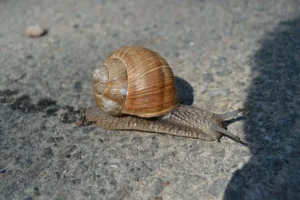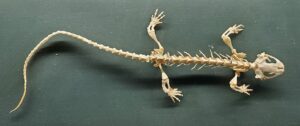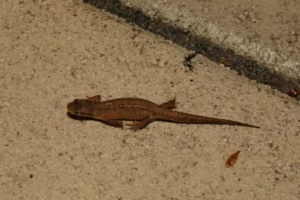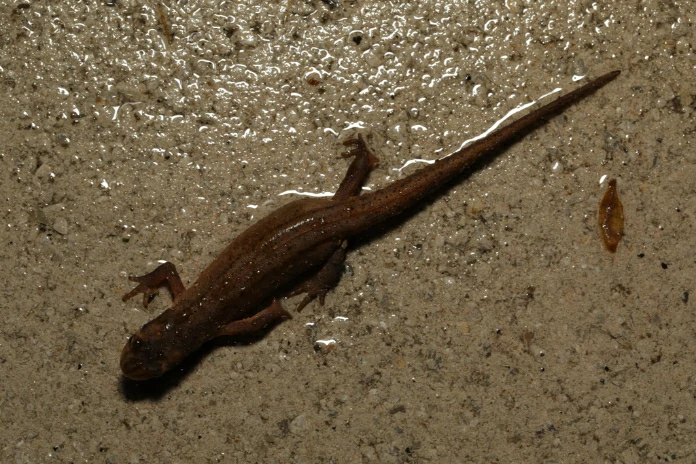You bend down near a pond and see a tiny creature glide through the water. Its skin looks soft, its tail sways side to side, and its body bends like a ribbon.
For a moment, it looks more like a worm than anything else. That raises a common question: is a newt an invertebrate, or does it belong to another group?
Newts aren’t invertebrates. They’re vertebrates, which means they have a backbone, just like mammals, birds, reptiles, and fish.
Their backbone is small and hidden, but it gives them strength, structure, and the ability to move on land and in water.
What Does It Mean to Be an Invertebrate?
An invertebrate is any animal without a backbone. That includes insects buzzing through the air, snails carrying shells, and jellyfish drifting in the sea.

They make up most of the animal kingdom (more than 90% of all animal species)
Vertebrates, on the other hand, have a backbone, or spine. This spine protects the spinal cord and works like scaffolding, holding the body together and letting it bend and move.
Newts fall into this group.
Even though they look soft, their skeleton runs under the skin.
Why Do Newts Get Mistaken for Invertebrates?
It’s easy to see why people get confused. Newts don’t look like typical vertebrates such as cats, birds, or lizards.
-
Their skin is smooth and moist instead of fur, feathers, or scales.
-
If you pick one up carefully, it feels slippery and delicate.
-
Their small size makes them look worm-like.
Add their wiggly swimming style, and it’s no wonder people think they’re closer to worms, snails, or insects.
The Hidden Backbone Inside a Newt
Beneath that slippery skin is a full skeleton. Running down the middle of a newt’s body is a backbone made of tiny bones called vertebrae.

The backbone:
-
Supports the body so it doesn’t collapse
-
Protects the spinal cord, which sends signals from the brain
-
Anchors muscles, letting the newt bend, stretch, and swim
Without a backbone, a newt couldn’t crawl over rocks, hold its head up, or move in water with control.
The skeleton is what separates it from the boneless world of invertebrates.
How Newts Fit into the Animal Kingdom
Scientists classify animals into groups. Newts belong to:
-
Kingdom: Animalia (they’re animals)
-
Phylum: Chordata (they have a backbone)
-
Class: Amphibia (they live on land and in water)
-
Order: Caudata or Urodela (the group with salamanders and newts)
This classification shows newts are vertebrates, sitting alongside frogs and salamanders, not worms or insects.
How Bones Shape Movement
Watching a newt walk across damp soil shows the backbone at work. Each step uses the spine and tiny limbs.

The body bends side to side, letting it crawl like a small lizard.
In water, the spine lets the body curve and straighten in waves. Without that support, the newt would flop instead of gliding gracefully.
The skeleton also helps newts switch between land and water, giving them the strength to push off solid ground.
Comparing Newts to True Invertebrates
Take a worm. It has no bones, relying on fluid-filled segments and muscles to move. A snail has a hard shell outside but no internal skeleton.
Even insects use exoskeletons (hard outer shells) to support their body.
Newts carry their support inside. Their vertebrae, ribs, and skull give a framework that lets them crawl over rocks, climb small plants, and move between land and water with purpose.
Do Newts Share Traits with Invertebrates?
Even though they’re vertebrates, newts share some traits with invertebrates:
-
Moist, delicate skin
-
Soft eggs laid in water, often wrapped around plants
These surface traits explain the confusion. But their backbone sets them apart.
Why Being Vertebrates Matters for Newts
Being vertebrates is more than a label. It lets newts move efficiently on land and in water, climb, swim, and escape predators.
Their backbone shields their nervous system, giving better coordination and memory than most invertebrates.
An internal skeleton also lets them grow larger than many boneless animals.
These advantages help amphibians, including newts, survive and adapt over millions of years.
Conclusion
So, are newts invertebrates?
No, they’re vertebrates. Beneath their soft, slippery skin lies a backbone that gives structure, protects the spinal cord, and helps them move with surprising grace.
Even if newts look boneless and worm-like, they share the same basic framework as mammals, birds, reptiles, and fish.
Their hidden skeleton is why they can crawl, swim, and survive so well.
Hi, my name is Ezra Mushala, i have been interested animals all my life. I am the main author and editor here at snakeinformer.com.

